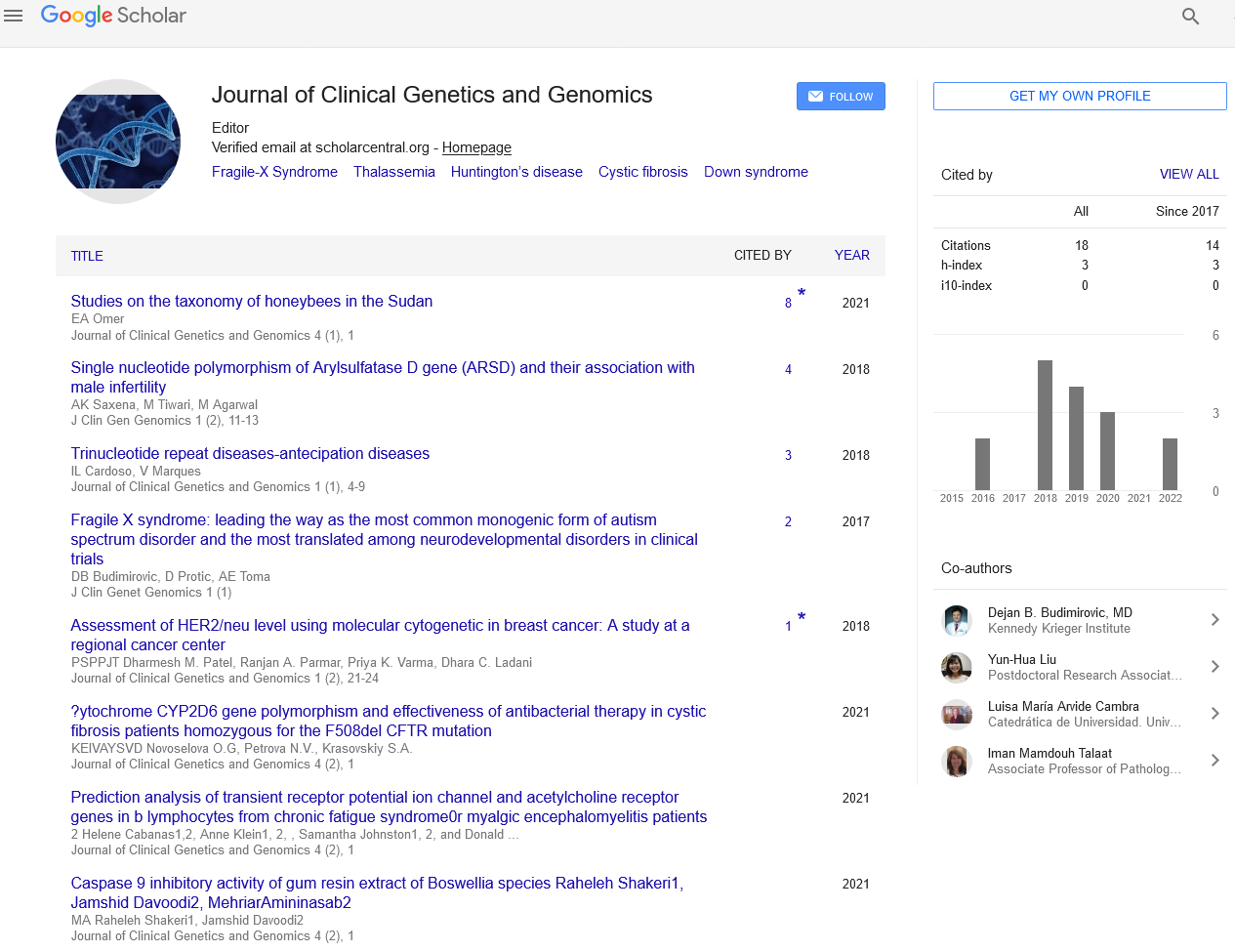INSACOG: its contribution to SARS-CoV-2 whole genome sequencing in India
Received: 16-Apr-2023, Manuscript No. PULJCGG-23-6357; Editor assigned: 18-Apr-2023, Pre QC No. PULJCGG-23-6357 (PQ); Reviewed: 02-May-2023 QC No. PULJCGG-23-6357; Revised: 16-Jul-2023, Manuscript No. PULJCGG-23-6357 (R); Published: 23-Jul-2023
Citation: Bharati K. INSACOG: its contribution to SARS-CoV-2 whole genome sequencingn in India. J Clin Genet Genom 2023;6(4):01.
This open-access article is distributed under the terms of the Creative Commons Attribution Non-Commercial License (CC BY-NC) (http://creativecommons.org/licenses/by-nc/4.0/), which permits reuse, distribution and reproduction of the article, provided that the original work is properly cited and the reuse is restricted to noncommercial purposes. For commercial reuse, contact reprints@pulsus.com
Description
The Severe Acute Respiratory Syndrome Coronavirus 2 (SARS-CoV-2) is the etiologic agent of the Coronavirus Disease 2019 (COVID-19), which originated in Wuhan, Hubei Province, China and has wreaked havoc in every nook and corner of the globe. It has spread like wildfire across the world and has claimed close to 7 million lives so far.
Whole genome sequencing is vital for tracking the spread and evolution of SARS-CoV-2. Moreover, whole genome sequencing allows the identification of new mutations, especially in the spike protein, based on which the speed of transmission and potential for more severe disease can be predicted. Sequencing also helps to differentiate between variants, as well as their subvariants.
Therefore, based on the need to track virus evolution, the Indian SARSCoV- 2 Genomics Consortium (INSACOG) was set up on 30th December 2020. This was initiated jointly by the Ministry of Health and Family Welfare (MoHFW), Department of Biotechnology (DBT), Indian Council of Medical Research (ICMR), and the Council of Scientific and Industrial Research (CSIR), all of which are organizations of the Government of India. Currently, the consortium consists of a network of 58 labs distributed pan- India. Of these, the Regional Sequencing Labs (RSLs) are the major ones that cater to the largest portion of the Indian population. These include the National Institute of Biomedical Genomics (NIBMG) and the Institute of Life Sciences (ILS) in Eastern India; the Institute of Genomics and Integrative Biology (IGIB) and National Center for Disease Control (NCDC) in Northern India; the National Institute of Virology (NIV) and National Center for Cell Science (NCCS) in Western India; the Center for Cellular and Molecular Biology (CCMB) and Center for DNA Fingerprinting and Diagnostics (CDFD) in Central India; and the National Center for Biological Sciences (NCBS) and National Institute of Mental Health and Neurosciences (NIMHANS) in Southern India.
INSACOG focuses on tracking Variants of Concern (VOCs) that may pose a threat to the country. This network of high-end labs is instrumental for sentinel and surge surveillance so that a quick public health response can be initiated if the need arises. The consortium has provided important insight on the previous VOCs, such as Alpha (α; B.1.1.7), Beta (β; B.1.351), Gamma (γ; P.1), and Delta (δ; B.1.617.2), as well as the current globally dominant VOC, namely, Omicron (o; B.1.1.529). Given the current surge in COVID-19 cases in India, INSACOG is intensely tracking the major subvariants in the country, especially XBB.1.16, nicknamed Arcturus.
From the foregoing discussion, it is clearly evident that INSACOG is doing fantastic work across the length and breadth of the country, which in itself is a great achievement for India. Most importantly, the consortium has provided vital data on emerging VOCs, which will be immensely useful to chart the future course of action and public health response in this volatile epidemiological situation in India.





